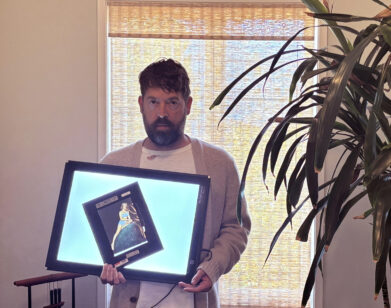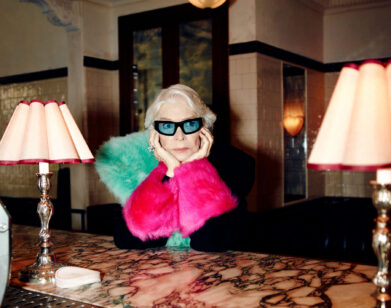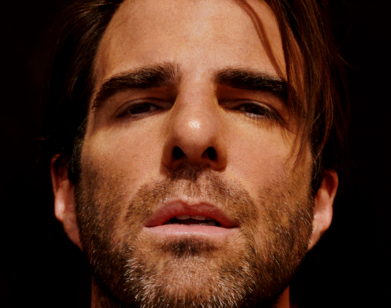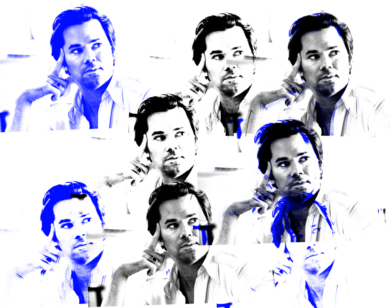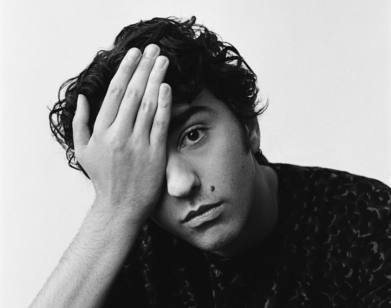dinner is served
Matt Bomer and William Friedkin on the Timeless Radicalism of The Boys in the Band
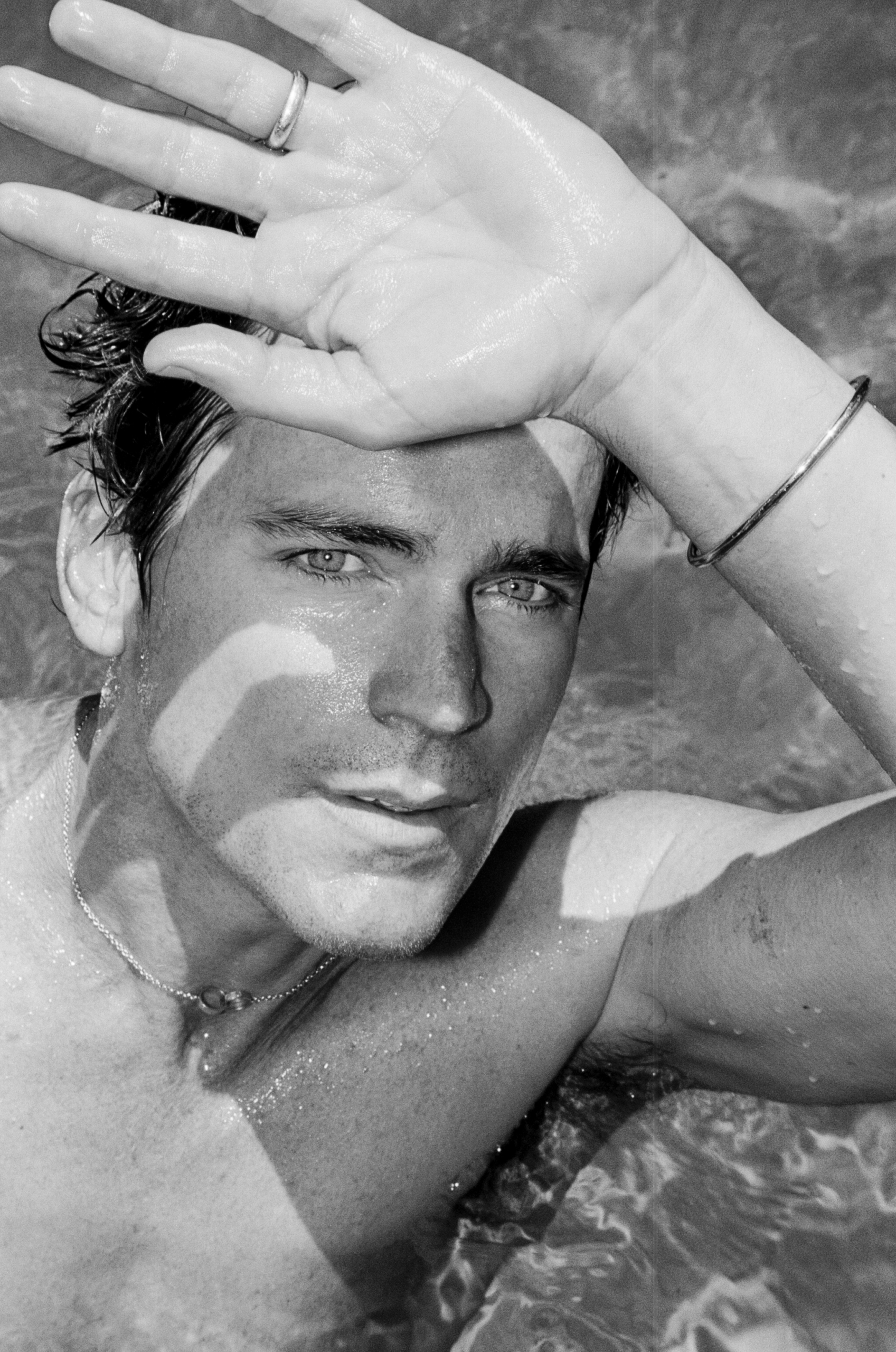
Ring (worn throughout) Matt’s Own. Necklace by Cartier Love. Bracelet by Cartier Juste un Clou.
Matt Bomer and William Friedkin first met at Il Piccolino, a white-tablecloth Italian restaurant in West Hollywood. They were there to discuss The Boys in the Band, Mart Crowley’s seminal 1968 play about a group of gay men who get together to celebrate a birthday in a New York City apartment, and over the course of the night are forced to confront certain truths and lies, to devastating effect. Friedkin, best known as the director of Hollywood game-changers such as The French Connection and The Exorcist, brought Crowley’s play to the screen in 1970, and Bomer was about to do the same. Along with an all-gay cast that includes Jim Parsons, Andrew Rannells, and Zachary Quinto, the 42-year-old actor performed in Ryan Murphy’s 2018 Broadway production, which won the Tony Award for Best Revival of a Play. Two years later, Murphy, along with the play’s director Joe Mantello, brought the cast back together for a filmed version of the play, which is currently streaming on Netflix. We aren’t privy to what exactly Bomer and Friedkin discussed over that fateful dinner, but thankfully, the two of them gave it another shot. —BEN BARNA
———
WILLIAM FRIEDKIN: Hey, Matt. It’s Bill Friedkin here.
MATT BOMER: Bill, how are you?
FRIEDKIN: I’m doing great. How are you?
BOMER: I’m grateful, all things considered.
FRIEDKIN: The virus has escaped you, I imagine?
BOMER: We’ve been pretty vigilant about safety protocols. These days, it’s more about making sure the kids don’t fall behind with homeschooling.
FRIEDKIN: They’re being homeschooled, huh?
BOMER: They’re being homeschooled and they’ve been so resilient, so we really can’t complain.
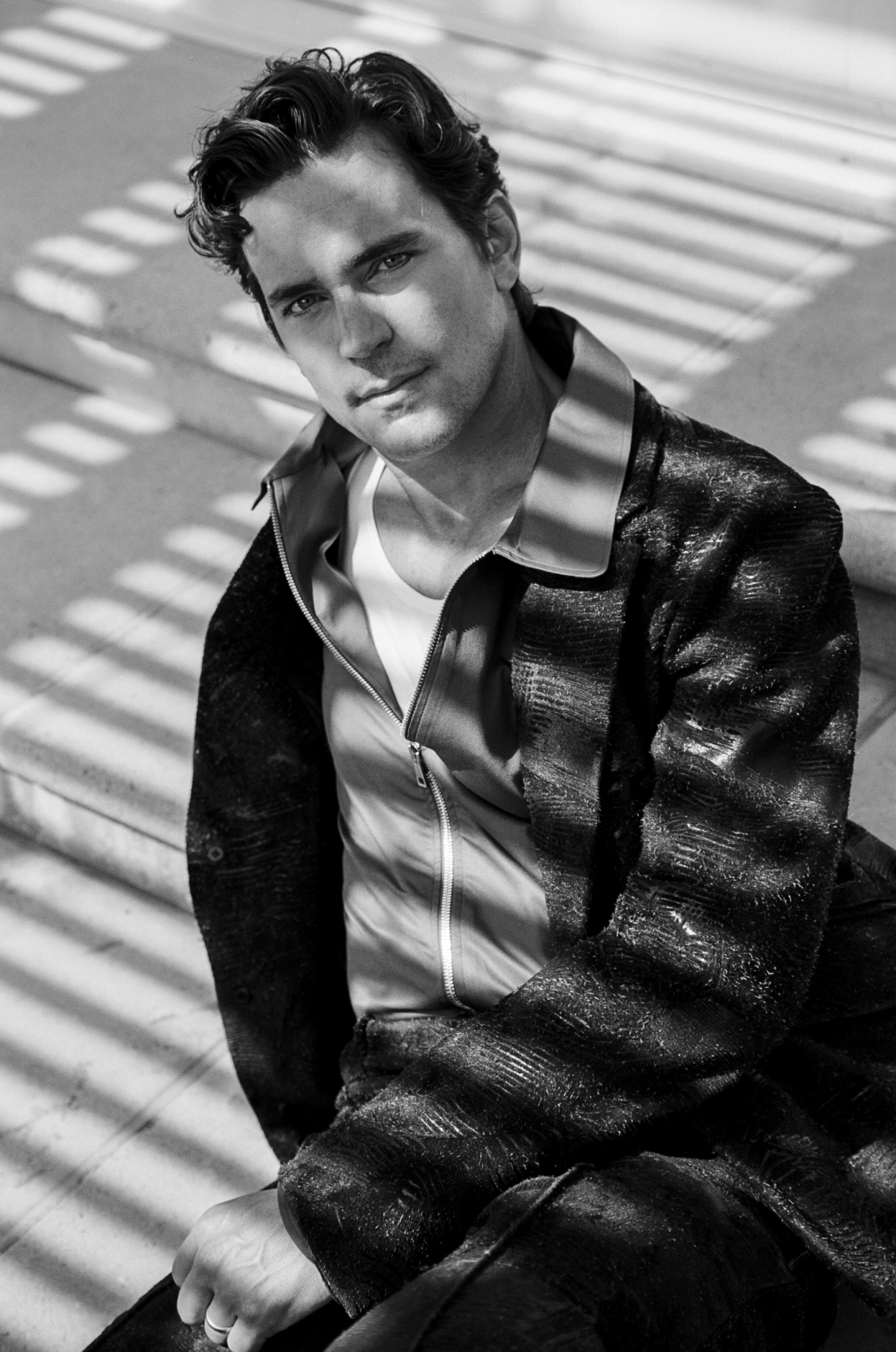
Jacket, Shirt, and Pants by Ermenegildo Zegna XXX.
FRIEDKIN: How old are they?
BOMER: Our oldest is 15. As you can imagine, that’s a really fun age to be stuck at home.
FRIEDKIN: You can give him the seven volumes of Marcel Proust to start reading.
BOMER: That’s a good idea, actually. I’m so curious what it must have been like for you to revisit this material all these years later.
FRIEDKIN: I’ll tell you what it was like. It made me appreciate even more how great a piece it is. It was very controversial when it first came out as a play, and then when I made the film it was very controversial, and then it became a part of a landscape. And then things changed tremendously so that, unquestionably, I think, it’s a period piece. There’s no closet as there was when we made this film in 1968. The closet was enormous.
BOMER: It’s a piece that’s about the cost of oppression. It’s about that moment right before revolution, and all the ugliness and the pain that comes with that.
FRIEDKIN: Seeing it again with this new cast made me realize what a timeless piece Mart [Crowley] had written. When I directed the film, I thought, “This is terrific,” but I didn’t realize it was going to be a classic.
BOMER: I’m so struck by the courage it took for Mart to put this piece in front of a mainstream audience. It was really unprecedented at the time. And also, for all these actors to have taken on these roles, which was considered risky at the time. The fact that we can now, a little over 50 years later, have an all-openly-gay cast with thriving careers play these roles, we owe so much of that to Mart and the original cast, and you, for filming it.
FRIEDKIN: Oh, thank you. Mart had a tremendous impulse to write this play the way he felt it, to not disguise the characters. He got a lot of pushback on things like that. Edward Albee hated this play. You know that, don’t you?
BOMER: I do know that.
FRIEDKIN: And Mart revered Albee. He took the play, originally, to Richard Barr, who was Edward Albee’s producing partner, and Barr loved it and wanted to do it, and Albee did not. It was Albee who said to Richard Barr, “You can go ahead and produce this, but I don’t ever want it to appear on Broadway.” And that’s why it never did. He thought it would die a quick death off-Broadway. And of course, it didn’t. But he broke Mart’s heart.
BOMER: I don’t know how you can see this play, particularly through the lens of 1968, and not think, “Wow, something has got to change.” You watch it and think, “Oh my goodness, these characters are going to be doomed to repeat this night over and over again until something changes.”
FRIEDKIN: That’s right. I know that Mart loved the production you guys did. It was brilliantly done by everybody, and especially Joe Mantello.
BOMER: Well, thank you, especially in light of your iconic production. Your background in documentary added so much to the piece, because you really felt like you were there in the trenches with the actors.
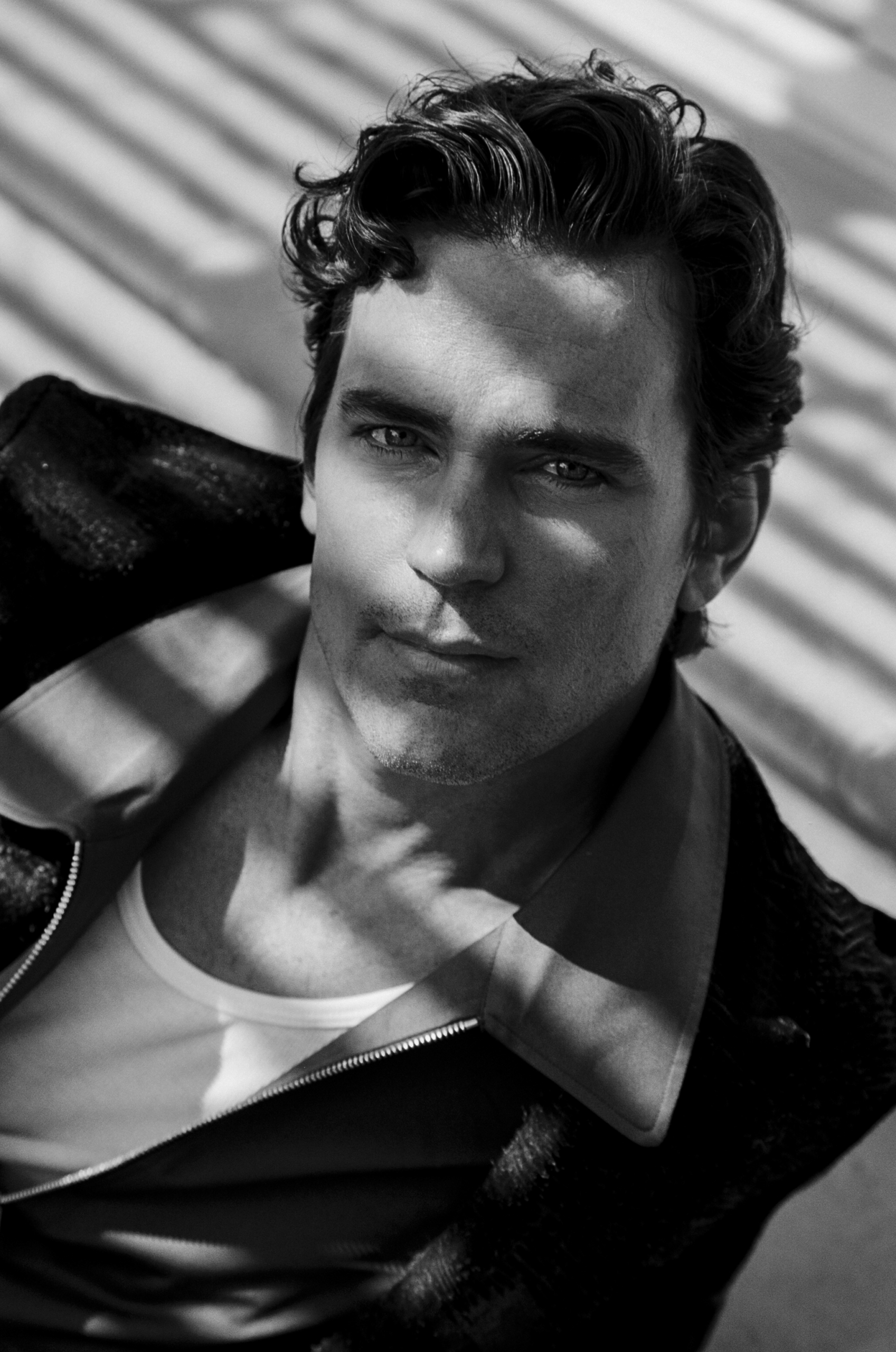
Jacket, Shirt, and Pants by Ermenegildo Zegna XXX.
FRIEDKIN: The only thing I tried to do was to keep it moving until it grinds to a halt and changes directions. It starts out as a fun night and then it disintegrates into one of the outer rings of hell.
BOMER: One of the things Joe wanted to do in this production was to have a Twelve Angry Men feel, where the room gets smaller and smaller and tighter and tighter as the movie goes on.
FRIEDKIN: The tenth character is claustrophobia. They’re sealed into that space. It’s pouring rain outside. They can’t go out. It really is a kind of no-exit. I always had that in mind. I was amazed to see how it holds its secrets right to the end.
BOMER: One of the benefits of getting to do it onstage is that folks come backstage after the show and want to talk about it. I was so struck by how many of the younger generation responded to the piece and said, “I’ve been to parties like this where people read each other.” Or, “I know a Harold, I know an Emory, I know a Michael.” There was something about these characters that Mart captured that was speaking to a whole new generation.
FRIEDKIN: Yes. It was interesting for me to see these characters played by different people. The original cast was iconic, but I think you guys knocked it out of the park. It’s really a tribute to Ryan [Murphy] that he put together this wonderful cast. Was it fun on set? Because we had nothing but fun. It was a party every day. At 5 p.m., I would stop and we’d serve drinks and snacks, and we’d have the party for real, so that those guys became so tight and had so much fun playing off each other, that it translated on film. I wondered if the same was true for your company.
BOMER: Well, yeah. I would say that it started with the play. The fact that we were all openly gay really informed our purpose as artists and our camaraderie as a group. Everybody came to rehearsals with their sleeves rolled up, and we had the incredible Joe Mantello to navigate us and guide us and create rhythms and tones. Once we felt the response from the audience, we just had a blast. It’s so rare that you get to revisit a theatrical experience on film with the exact same cast and director. There was an inherent sense of trust and we could take risks in front of each other, and also not confine ourselves to the choices we made on stage.
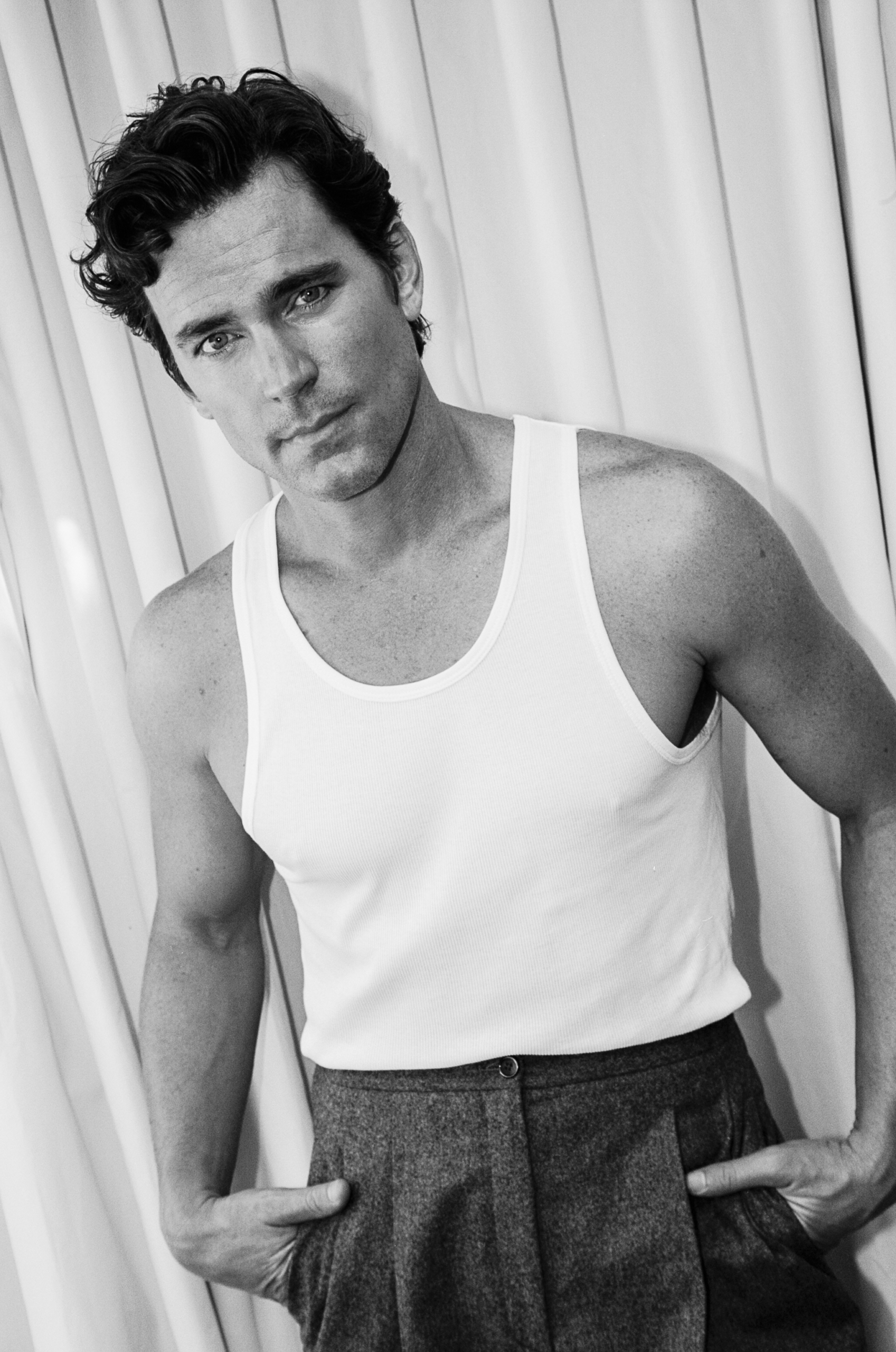
Tank Top by Calvin Klein Underwear. Pants by Michael Kors Collection.
FRIEDKIN: How long did you play it on stage?
BOMER: Nowhere near the length of time that the original cast did. I think it was a four-month run with preview.
FRIEDKIN: Well, that’s pretty damn good. And I know it won Best Revival.
BOMER: It did. And it recouped its expenses. It was a dream Broadway experience, where everybody loved each other. We didn’t want it to end, and we were lucky enough that people came to see it. This conversation is a perfect bookend to my experience. One of the beginnings of this journey was you and I having dinner at Il Piccolino two-and-a-half years ago. I remember thinking, “I can’t believe this icon of cinema is sitting down with me to discuss this play.” You ordered the cracked crab, and the cracked crab is a running joke within The Boys in the Band. And I just thought, “This is going to be priceless,” and it was. Some of the choices I made about my performance, right up until the end, were influenced by the conversation we had that day.
FRIEDKIN: When we met, I knew how into it you were, and I could tell it was going to work. It felt not unlike what was created when Mart first put the play on way, way off-Broadway. I wasn’t able to see your play, as you know. I was getting sick around that time. And I was not well enough to travel in for the opening, though I had planned to. The first time I saw this production was on the print Netflix was so good to provide. My wife and I saw it together and we were just knocked out.
BOMER: Oh, wow.
FRIEDKIN: You want to love it, but you’re never sure if you’re going to, because I’ve had the experience of the other production. But I forgot all about that when I watched your production. None of that mattered. You just brought this thing to life.
BOMER: I think we owe so much of that to Joe Mantello and, honestly, the iconic piece of cinema that you created. And mostly, to Mart, who created a piece that absolutely belongs in the canon of great plays. I was so sad when we lost him this year because he was such a light. This is a play about a group of men looking for a horizon that isn’t there yet. It’s about a group of men who don’t have role models, who don’t have mentors. And, ultimately, I think that Mart became a phenomenal mentor. When I look at him and his humor, his joy and his creativity, and his lust for life in his 80s, I think, “Wow, that’s a mentor.”
FRIEDKIN: There is a kind of closure with this. The beginning of the whole process was his idol, Edward Albee, telling him that it was no good. What bothered Albee was that Mart did not disguise the characters. They’re not hidden as the characters are in much of Albee’s work and much of Tennessee Williams’s, who probably wrote better about gay life than anyone, without ever indicating that that’s what he was really doing. Mart didn’t give a damn about any of that. There will be other productions of this, I’m sure, influenced by what you guys did. The film that you guys made is going to be on Netflix. It’ll have a tremendous audience.
BOMER: It is shocking how many people watch it, and it’s such a blessing.
FRIEDKIN: And it’s permanent. It’ll be there for a good long time. And they get millions of people who watch almost everything. It’s an amazing platform. I’m happy there are all these streaming services and you can get something like The Boys in the Band in your home.
BOMER: And you can engage with all the great cinema from over the years. I was able to rewatch your movie The French Connection, and now I’m going to rewatch To Live and Die in L.A.
FRIEDKIN: All of my stuff is playing constantly on some service. When I started making films in the late 1960s, we had no idea they’d ever be run again. We thought they’d have a theatrical run and then they were done. Television wasn’t buying first-run films. I think it was late into the ’70s when CBS bought The Exorcist to run in primetime. They paid ten million dollars for it, which today would be the equivalent of close to $100 million. But my version of The Boys in the Band has never been shown on a network in primetime, and now here’s your production that has the command of Netflix. It’ll be seen around the world, at whatever time people want to see it.
BOMER: Here’s to progress, my friend.
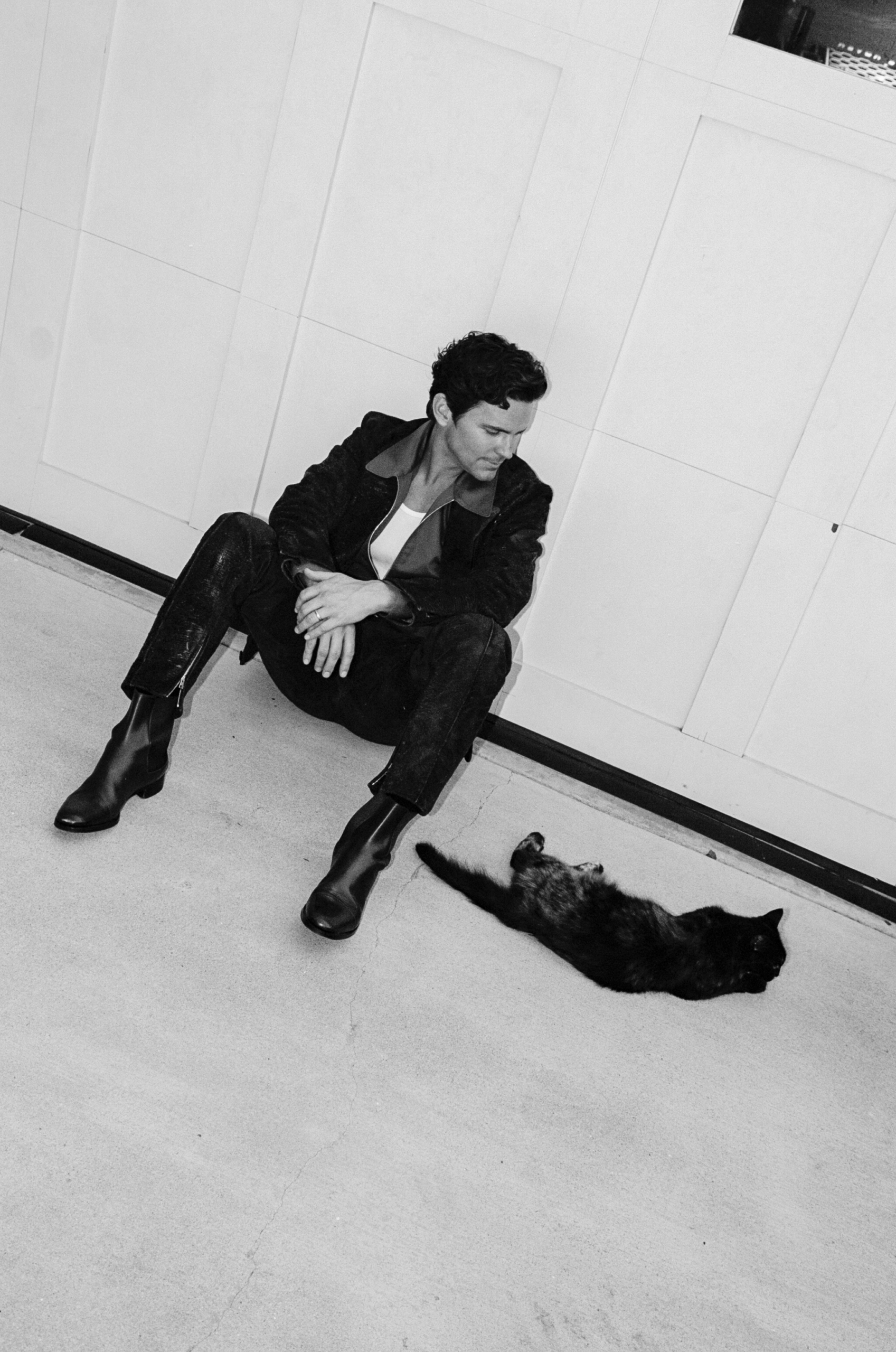
Jacket, Shirt, and Pants by Ermenegildo Zegna XXX. Shoes by Christian Louboutin.
Grooming: Joanna Pensinger.


